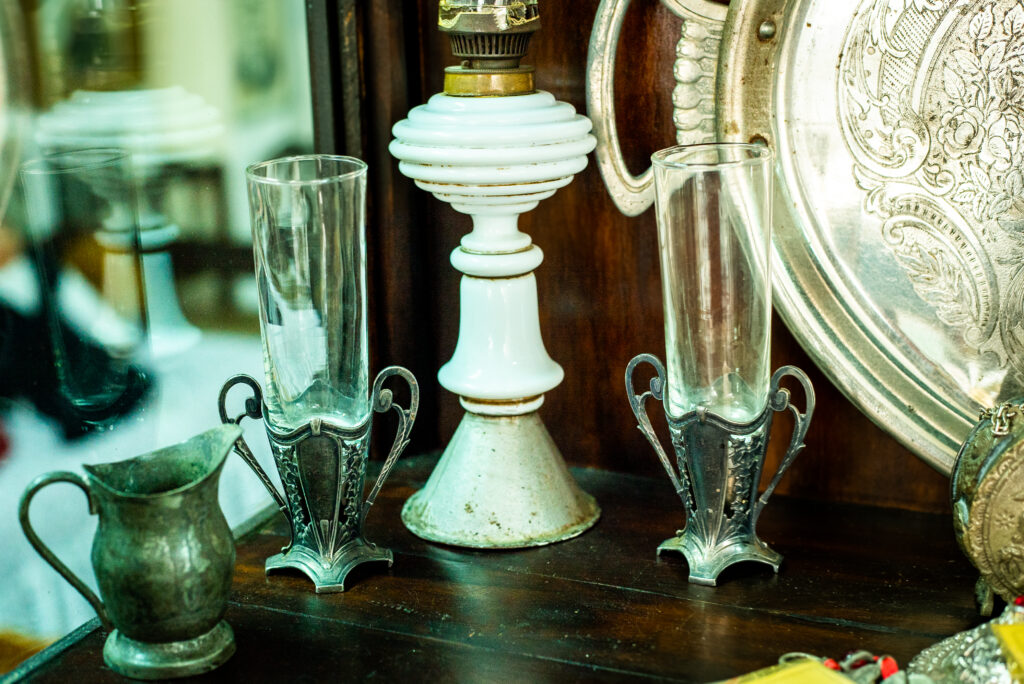
Ourania Stamatiadou-Koutsogianni, the granddaughter and namesake of Ourania Stamatiadou, is a retired educator and the chairwoman of the ‘Englezonisi’ Cultural Association of Asia Minor Greeks of Nea Ionia, Magnisia. She is overwhelmingly generous with stories of her family and the rest of the Englezonisi refugees. Besides sharing her narratives, she also keeps two small vases brought to Greece by her family on a small display at the association’s offices.
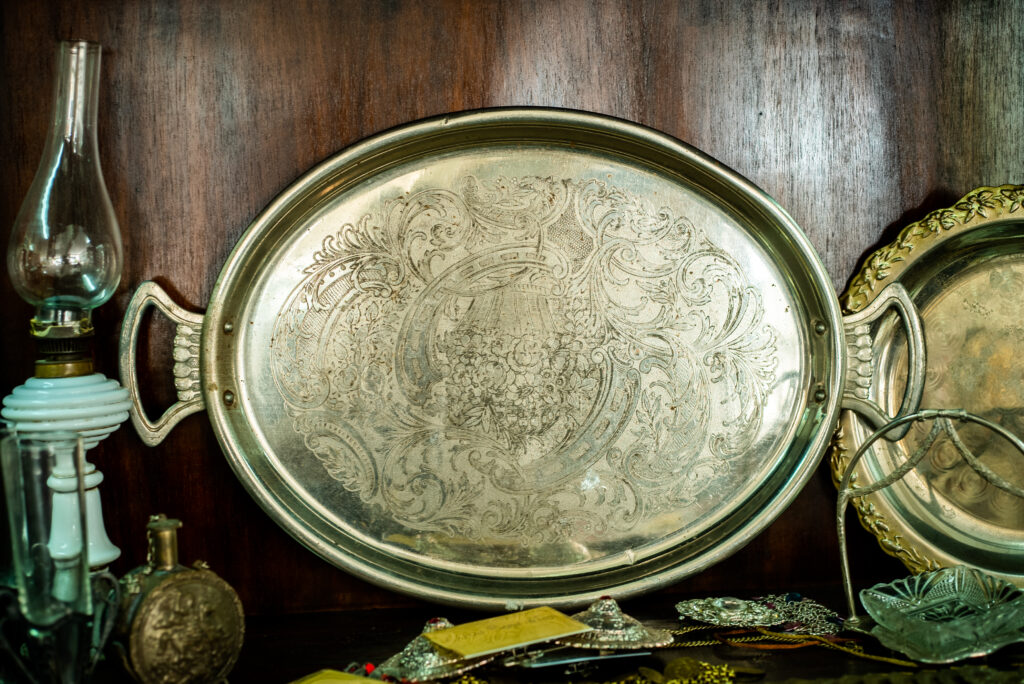
A silver tray, two small vases and a silver flask engraved with the icon of Agios Georgios are all the belongings Ourania Stamatiadou-Koutsogiannis’ grandparents managed to bring with them to Greece. These objects are part of her family history, but also of the history of all refugees. Ourania believes that their value lies in their ability to disseminate and preserve refugee history.
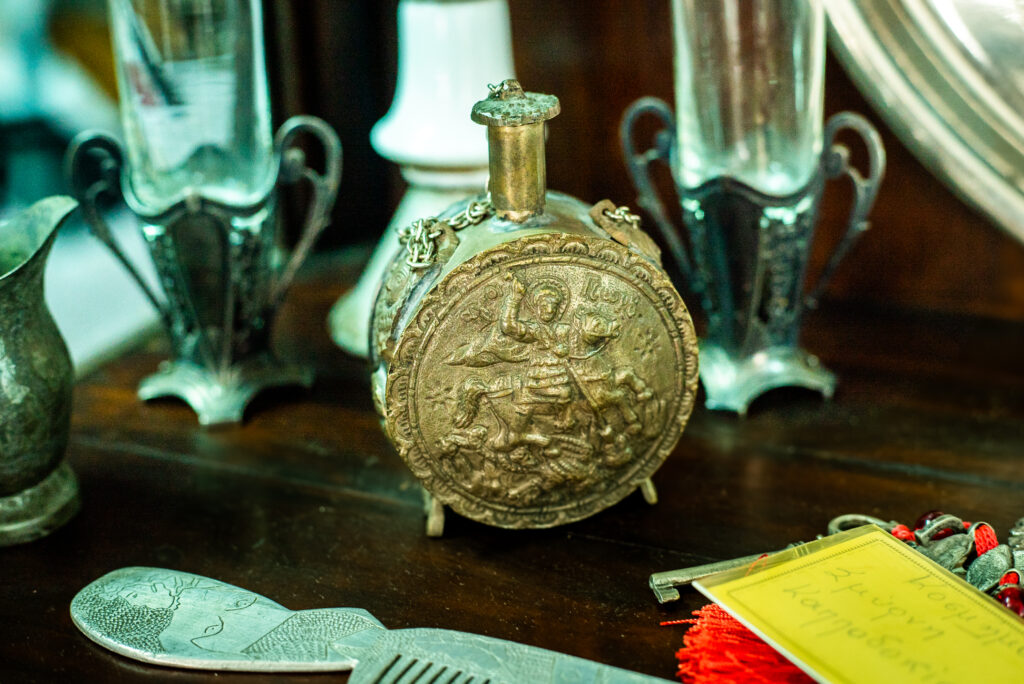
For Ourania Stamatiadou-Koutsogianni, the story of her grandparents, starting with their origins, then their exodus and the new life they built at the refugee neighbourhoods of Nea Ionia, is part not only of her family history, but also of the history of Asia Minor Hellenism in general, of the refugee movement of 1922 and the new refugee settlements which sprung up all over the country.
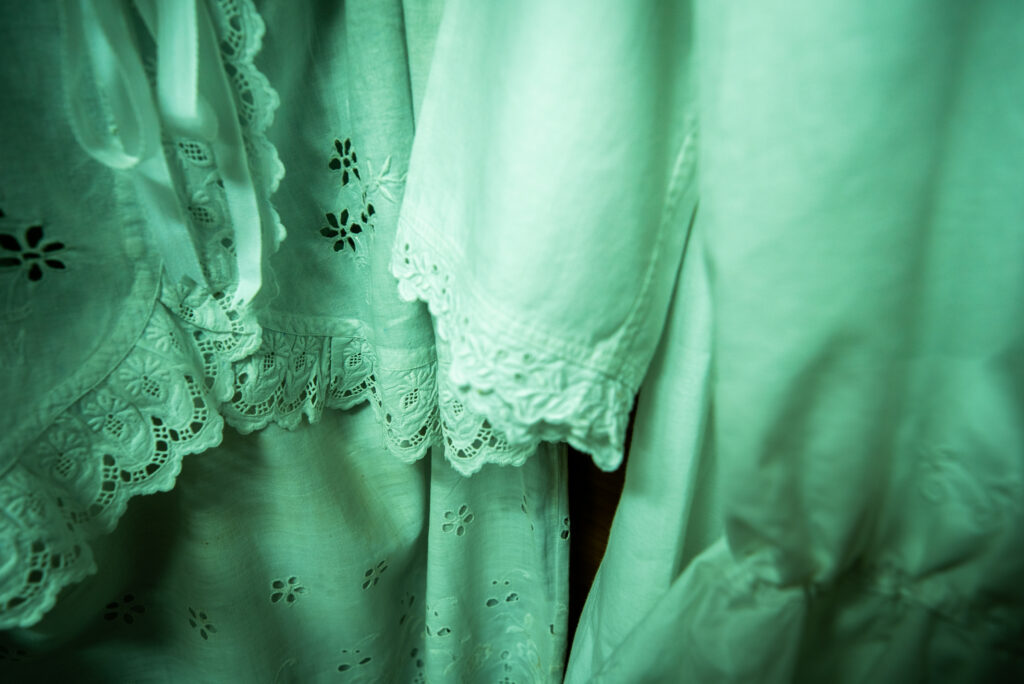
The offices of the ‘Englezonisi’ Cultural Association of Asia Minor Greeks of Nea Ionia, Magnisia host a small exhibition of household items, clothes, and linen brought over by the refugees. Among the exhibits displayed, you can see embroidered, handmade, cotton, bridal underwear and everyday cotton undergarments.
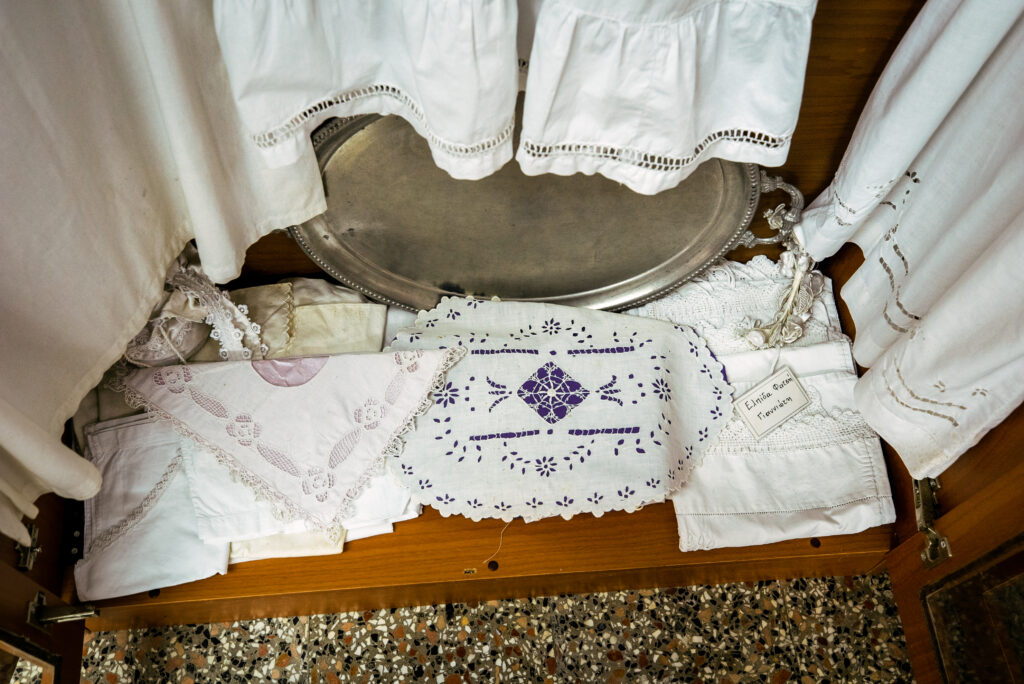
The offices of the ‘Englezonisi’ Cultural Association of Asia Minor Greeks of Nea Ionia, Magnisia host a small exhibition of household items, clothes, and linen brought over by the refugees. Among them, the handmade embroideries and dowries of girls and women.
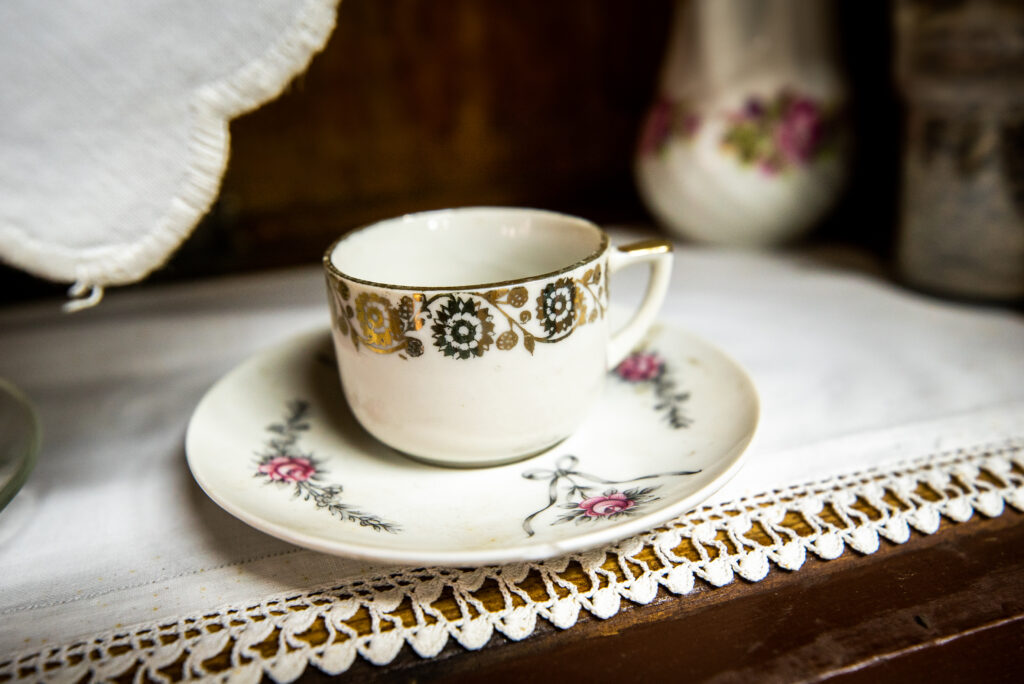
A single burner gas stove, tea cups, and ornate saucers crossed the Aegean Sea, reached Nea Ionia of Volos, and were later donated by their owners to the ‘Englezonisi’ Cultural Association of Asia Minor Greeks of Nea Ionia, Magnisia, so that they could take their place in the community’s shared past and assist in their own way in the effort towards the preservation of its memory and history.

The family of Kyriakoula Moschou brought few items with them to Greece, mostly religious icons. Apart from carrying great value for their owners, these icons soon became symbols for the whole neighbourhood. They gave hope and instilled courage, helping the refugees cope with the hardships of their everyday life. The icons did not just stand for their faith in God, but were also symbols of the solidarity and the kindness that brought the neighbourhood’s residents together.

Georgios Trechas, along with his young son Dimitris, and Konstantinos Raspitsos met again at the makeshift refugee settlement of Drapetsona where they started over: new homes, new boats, new lives. A wooden icon of the Virgin Mary is one of the few belongings they brought with them.
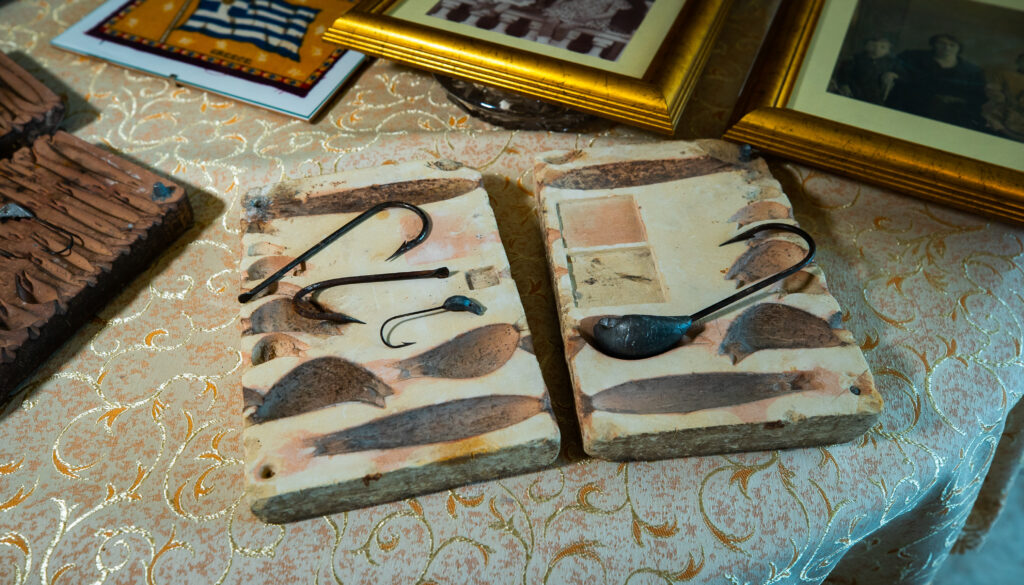
Georgios Trechas and Konstantinos Raspitsos were born at the end of the 19th century on Englezonisi, a small island in the Gulf of Smyrna with a population of around 2,500 people, mainly Christians. From a very young age, they started working as fishermen to provide for their families. Two stone moulds for fishing hooks, today in the possession of Konstantinos Trechas, Georgios’ grandson, are some of the few belongings they brought with them to Greece.








